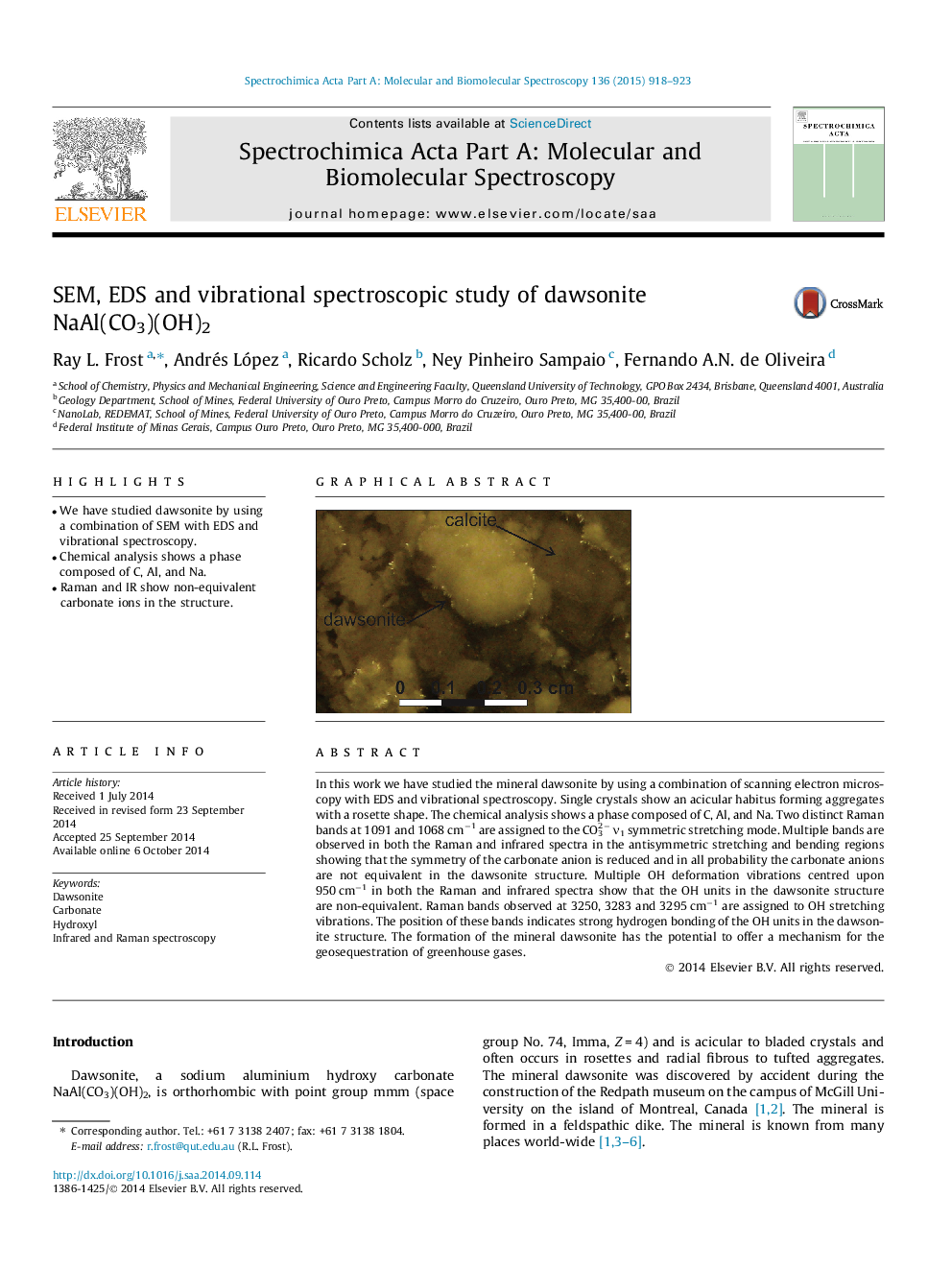| Article ID | Journal | Published Year | Pages | File Type |
|---|---|---|---|---|
| 1229512 | Spectrochimica Acta Part A: Molecular and Biomolecular Spectroscopy | 2015 | 6 Pages |
•We have studied dawsonite by using a combination of SEM with EDS and vibrational spectroscopy.•Chemical analysis shows a phase composed of C, Al, and Na.•Raman and IR show non-equivalent carbonate ions in the structure.
In this work we have studied the mineral dawsonite by using a combination of scanning electron microscopy with EDS and vibrational spectroscopy. Single crystals show an acicular habitus forming aggregates with a rosette shape. The chemical analysis shows a phase composed of C, Al, and Na. Two distinct Raman bands at 1091 and 1068 cm−1 are assigned to the CO32− ν1 symmetric stretching mode. Multiple bands are observed in both the Raman and infrared spectra in the antisymmetric stretching and bending regions showing that the symmetry of the carbonate anion is reduced and in all probability the carbonate anions are not equivalent in the dawsonite structure. Multiple OH deformation vibrations centred upon 950 cm−1 in both the Raman and infrared spectra show that the OH units in the dawsonite structure are non-equivalent. Raman bands observed at 3250, 3283 and 3295 cm−1 are assigned to OH stretching vibrations. The position of these bands indicates strong hydrogen bonding of the OH units in the dawsonite structure. The formation of the mineral dawsonite has the potential to offer a mechanism for the geosequestration of greenhouse gases.
Graphical abstractFigure optionsDownload full-size imageDownload as PowerPoint slide
